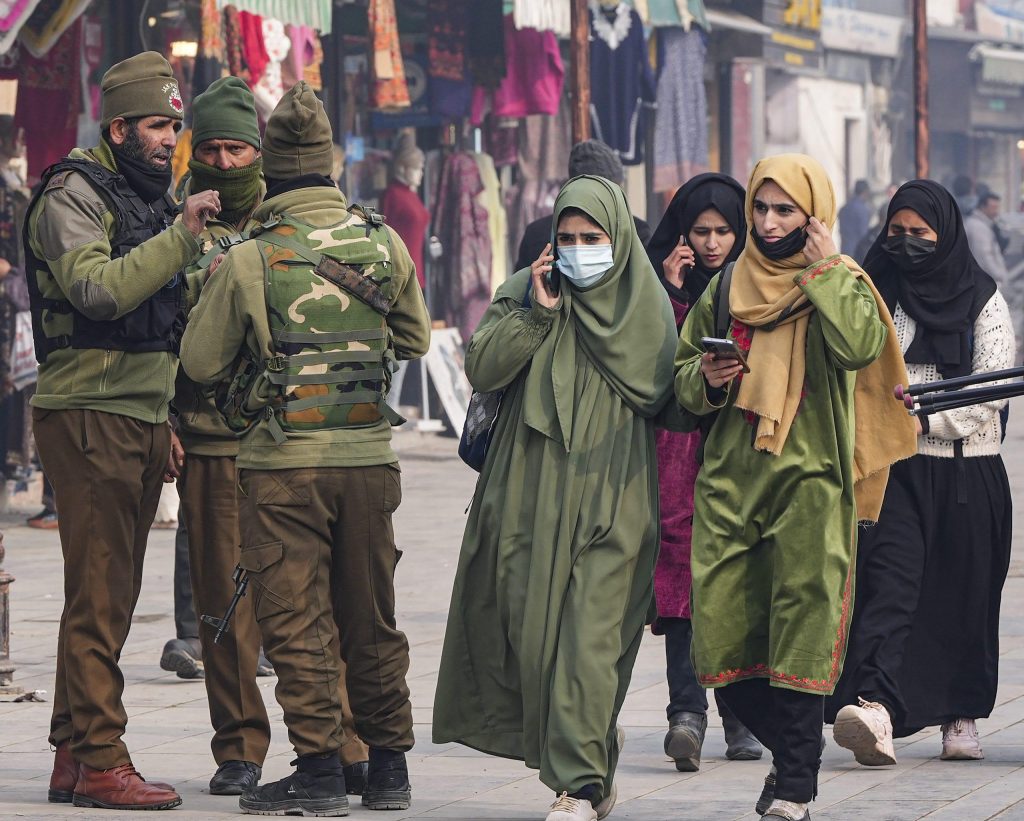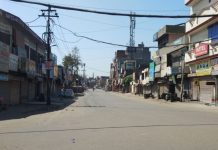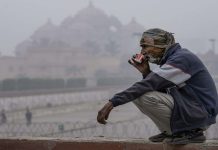
However, major parties in J&K like NC and the PDP have made it known that Article 370 is not a closed chapter for them. Both Omar and Mehbooba have said that although they are disappointed by the judgment, they will continue the political struggle for its restoration. A report by Riyaz Wani
The tense anticipation and fear of upheaval in Kashmir preceding the revocation of Article 370 by Parliament on August 5, 2019, sharply contrasted with the muted response in the region following the Supreme Court’s affirmation of the decision. However, the reason for this was not that people were indifferent, just that they weren’t allowed to express their opinion publicly. Three days before the judgment, the administration beefed up the security checks on the roads. Police launched a campaign against the alleged misuse of social media. Several people were booked for either uploading ‘hateful content’ or spreading rumours. On the day, judgment was announced, leading political figures like former chief ministers Omar Abdullah and Mehbooba Mufti were put under house arrest, a throwback to the day when Parliament revoked the constitutional provision.
However, now that the apex court has validated the abrogation of Article 370, a decision that was along expected lines, Jammu and Kashmir has formally entered the new era of ‘Naya Kashmir’ – a term coined by Prime Minister Narendra Modi for post-Article 370 period in the region. The judgment has, however, not brought any closure or sought to address the situation as it has existed since the outbreak of separatist movement in 1989.
It is true that the situation in Kashmir has visibly improved over the past four years, but it is also true that this has not been an organic process. On the face of it, the union territory looks like any other normal place. Kashmir Valley is no longer a witness to frequent protests, stone-pelting and shutdowns. Separatist politics has all but disappeared. Tourism is booming, with over one crore tourists having visited the union territory up to November. Tourists are also visiting the hitherto no-go zones near the border with Pakistan.
Does this constitute normalcy? Apparently yes. But look deeper, and the situation appears contrary to its outward appearance. While mass protests may have vanished, the overall sense of uncertainty hasn’t. And if there has to be real peace in the Valley, the government will need to reach out to people to make them a part of the ongoing process rather than go about doing things without taking them into confidence.
The ongoing transformation is principally driven by the suppression of separatist politics, decline in militancy and the growth in tourism. The once-vaunted separatist conglomerate, Hurriyat Conference has become extinct. Many of the grouping’s top leaders continue to be in jail or are under house arrest. This has hobbled its capacity to organize any political activity.
But even if the separatist leaders were free – and some of them are free – the situation would hardly be different. The government has outlawed any sign of separatist activity in whatever form and disproportionately raised the costs for any leader or an activist to go out and champion the cause.
There have been other far-reaching administrative and legal changes right from the domicile laws to new land laws. As a result, J&K citizenship and the right to own a land have been thrown open to outsiders. The government has also overturned the Roshni Act whereby occupants of state land were allowed to own it against payment determined by the government. Scores of other laws have been extended to the former state that is aiding the process of fundamentally altering the facts on the ground.
In the Kashmir Valley, the number of militants, according to an estimate, has dwindled to around 100. Ever since the withdrawal of Article 370, over 550 militants have been killed in the region, most of them local youth. But despite the reduction in the number of militants, violence has persisted, flaring up only now and then.
Wherever do we go from here? The answer to this is complex. Though an uneasy peace has held in the Valley since August 2019, people are far from reconciling to the loss of autonomy as a fait accompli. They have been watching the unfolding state of affairs silently. The public protests have ceased, so have the incidents of stone pelting and hartals. But despite these outward manifestations of peace, the Valley is more alienated than ever.
So what is the solution? Under the circumstances, the holding of polls should go a long way to engage and involve people in the new state of affairs spawned by the revocation of Article 370. But that is not happening. The central government has been showing reluctance to hold polls, lest all it has accomplished in the UT over the past four years might unravel. But given the prevailing situation in the Valley, it is about time that New Delhi confronts and overcomes this reluctance.
Will the Supreme Court’s Article 370 build on the gains?
It is premature to say what formalizing the abrogation of Article 370 by the Supreme Court would lead to. The Court has upheld the application of all Indian Constitution provisions to Jammu and Kashmir, deeming Article 370 a temporary provision. At the same time, it has supported the restoration of statehood to J&K, also directing the Election Commission to conduct Assembly polls and expedite the state’s reinstatement.
The major political parties in Jammu and Kashmir like National Conference and the PDP have made it known that Article 370 is not a closed chapter for them. Both Omar and Mehbooba have said that although they are disappointed by the judgment, they will continue the political struggle for its restoration. A statement by the Hurriyat faction led by Mirwaiz Umar Farooq blamed the Kashmiri leaders who facilitated accession of J&K in 1947 for the turn of events.
“Those people who at the time of the partition of the subcontinent, facilitated the accession of J&K and reposed their faith in the promises and assurances given to them by the Indian leadership must feel deeply betrayed,” the conglomerate said in a statement.
The verdict also created a sense of despondence among ordinary people in Kashmir but their response has been marked by a sullen silence. The court’s upholding of the abrogation of Article 370 has been marked by lack of any protests or any social media outpouring. Similarly there has been no celebration of the judgment.
Local media has dutifully carried the government version of the development. One editorial in a local daily blamed Kashmiri political parties for their decision to litigate the revocation of Article 370, saying they should have instead pursued a political course of action.
“The recourse taken by Kashmiri leaders to challenge this in court raises pertinent questions about their strategy. The legal battle waged by them, while seeking to contest the constitutional validity of the government’s decision, perhaps missed an opportunity for a more robust political struggle,” read an editorial in a local daily.
Elections and statehood
Although the Supreme Court has sought Assembly elections in J&K until September 2024 and called for restoration of statehood “as soon as possible,” there is little hope in the UT that it will be carried through in the set timeline. More so, in case of statehood where the direction is without any timeframe. And should the BJP return to power in general elections, as seems likely, both elections and statehood are likely to be endlessly postponed.
Takeaways from the judgment
1. J&K does not retain any element of sovereignty after instrument of accession was signed
2. No internal sovereignty for Jammu and Kashmir
3. Challenge to the proclamation of presidential rule is not valid
4. Exercise of power of President must have a reasonable nexus with the object of presidential rule
5. Power of Parliament to legislate for state cannot exclude law making power
6. Article 370 was a temporary provision
7. When constituent assembly was dissolved only the transitory power of the assembly ceased to exist and no restriction on presidential order
8. Para 2 of co 272 by which article 370 was amended by amending article 367 was ultra vires as interpretation clause cannot be used for amendment
9. President use of power was not mala fide and no concurrence needed with state
10. Para 2 of co 272 in exercise of power under 370(1)(d) applying all provisions of Indian constitution to Jammu and Kashmir was valid
11. The continuous exercise of power by the President shows the gradual process of integration was ongoing, thus co 273 is valid
12. Constitution of Jammu and Kashmir is operative and is declared to have become redundant
13. Presidential use of power not mala fide
14. Solicitor general made a statement that statehood will be restored to Jammu and Kashmir. We uphold the decision to carve out union territory of Ladakh. We direct the Election Commission of India to hold polls under section 14 of the Reorganisation Act and statehood at the earliest.













